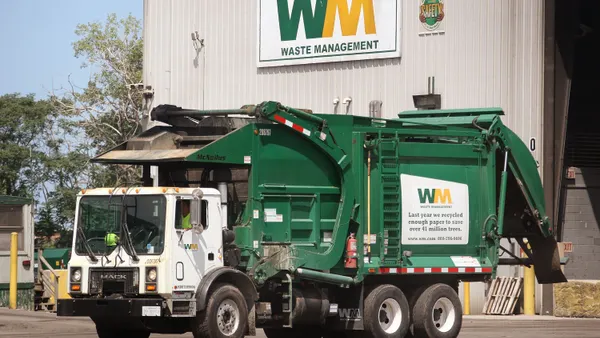Dive Brief:
- Bigbelly, Inc. reports that its bins collected nearly 112.2 million gallons of public space waste in 2016, along with 17.4 million gallons of recyclables and organic waste.
- The city with the highest diversion rate was Santa Clarita, CA at 66%, followed by Burlington, VT. The Thayer Street District Management Authority in Providence, RI led the list for most optimized collection route with a 99% efficiency rate.
- The University of California in Merced had the top higher education diversion rate at 69%, followed by the school's San Francisco campus. The University of Alberta in Canada had the most optimized collections at a 91% average efficiency rate.
Dive Insight:
With more than 1,500 customers in 50 countries, Bigbelly has now become one of the most ubiquitous "smart" bin technologies in public spaces. The solar-powered compactor cans are especially popular in high-traffic areas such as Times Square in New York. Last fall, the company was named in a report from Navigant Research that projected the market for smart waste collection technology had the potential to expand from $57.6 million in 2016 to $223.6 million in 2025.
Competing technologies such as SmartBin, Enevo and Compology have also been growing as cities and campuses look for better ways to manage their waste. Keeping up on litter in public spaces has been a challenge for municipalities and facility managers, especially those with limited staff, and this allows them to schedule collections more effectively. Some bins can also collect data on air quality, noise and pedestrian flows, or even serve as wireless hubs.
Such technology has extended into the world of consumers as well. Last year, the French company Uzer debuted a can that scan barcodes and tell people whether the item is recyclable. Two new bins were also recently showcased at CES 2017 — one that can create compost and the other that will track what is being thrown away to generate a grocery list.











